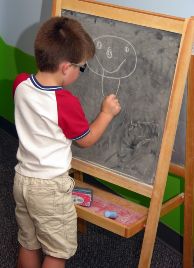What Age Do Children See Plagiarism As Wrong?
 A recent study by Kristina Olson and Alex Shaw from Yale attempted to discover the approximate age in which children begin to believe that plagiarism is wrong.
A recent study by Kristina Olson and Alex Shaw from Yale attempted to discover the approximate age in which children begin to believe that plagiarism is wrong.
The study showed children between the ages of 3 and 11 “videos and puppet vignettes” about that featured art students. In one of the videos, two students came up with their ideas independently and, in the second, one student copied his work off of the other.
The participants were then asked to rate the characters on their likeability. By ages 5 to 6, children began to rate the characters who copied work as being “more bad” than those who came up with original ideas and cited the copying as the reason. However, those aged 3 to 4 showed no such preference.
For psychologists, the question of plagiarism is an interesting one as children have to understand many different concepts to understand that plagiarism is wrong, including, according to the article, “that not everyone has access to all ideas, that people can create their own ideas and that stealing an idea, like stealing physical property, is wrong.”
As an anti-plagiarist, I find the results interesting for several reasons:
- Plagiarism Education: I’ve seen a trend of plagiarism education reaching younger and younger students, as early as third grade. This shows that the plagiarism education may be well-timed and not too early.
- Plagiarism Morality: Though some believe, with some valid arguments, that plagiarism is more of a professional issue than a moral one, this study hints that plagiarism is at least a mixture of moral and professional.
- Generational Gap: It is interesting that students as young as 5 and 6 see the moral issues of plagiarism in this capacity but, according to research of college students, many seem to lose that moral qualm with plagiarism later on. Could this be a shift in thinking over generations or do many students lose that view over time?
I don’t have any easy answers to the questions raised but I do find this study to be valuable in understanding the bigger picture of plagiarism and, possibly, understanding how to better combat it.
Hopefully this study will not only lead to a better understanding of child psychology, but also of plagiarism specifically, enabling academics and other creatives to better address the problem.
Want to Reuse or Republish this Content?
If you want to feature this article in your site, classroom or elsewhere, just let us know! We usually grant permission within 24 hours.
